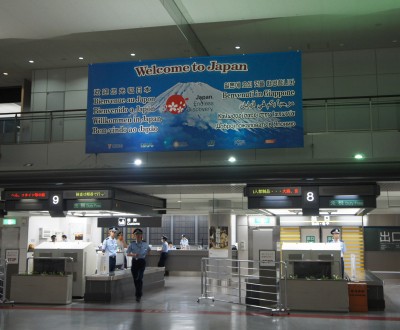Narita airport
The International Gateway to Tokyo
Narita Airport is located about 65 km east of Tokyo on the outskirts of the town of Narita in Chiba prefecture. It was opened in May 1978 and was known as the "New Tokyo International Airport" until it was privatized in 2004. It is the place where most travelers first set foot in Japan.
Narita Airport has been hosting most international flights ✈️ for decades while Haneda has been catering to domestic flights. However, more and more international flights are being scheduled to land and take off from Haneda which is located closer to Tokyo and is therefore more popular with visitors.
Narita Airport is nonetheless still true to impressive statistics :
- By December 2014, Narita Airport had already welcomed 900 million passengers. However, as explained above, the number of international flights processed through Narita Airport in 2014 amounted to less than 72% of its all-time record.
- By early June 2015, the airport had seen 5 million take-offs and landings since it was built. It had therefore taken 12 years to reach the first million and only five more years to achieve the fifth.
- In 2018, 102 cities had a direct connexion to Tokyo ; in 2017, more than 40 million travelers had transited through Narita Airport.
- In 2023, Narita airport received the highest number of international flights passengers, namely 33% of the overall traffic, beyond Haneda Airport and KIX (Kansai International Airport).
This is all due to the dramatic increase in the number of low-cost flights and the development of tourism from China and other parts of Asia.
3 Separate Terminals
The airport includes three main landing and take-off areas:
Terminal 1
Terminal 1 mainly caters to international flights and you are bound to land there if you come through Narita. It offers many conveniences such as the possibility of collecting a mobile phone, a SIM card or a Pocket WI-FI, of sending your luggage by takkyubin or of catching a train 🚅 to any of the Tokyo districts.
Terminal 2
Terminal 2, which was opened in December 1992, mainly hosts domestic flights and flights from and to Asia. In April 2015, the Toto brand set up a showroom there to promote their famous Washlets and try and boost export sales, even though Washlets are self-evident to the Japanese.
Terminal 3
Finally, Terminal 3, opened in April 2015, now handles many domestic flights from low-cost companies. It was decorated and fitted by Muji, the famous office supplies chain store and offers a cozy atmosphere as well as a large Muji-style dining hall open around the clock. Boarding areas have been designed to represent athletics tracks, blue for departures and red for arrivals. This is, of course, a reference to the Tokyo Olympics 🏅. Its construction cost only 15 billion Yen 💴 (~108,691,714.10 €) and it is only connected to the other terminals by shuttle services, not by rail.
A free WI-FI network (FreeWiFi-NARITA) is available in Terminals 1 and 2 although speed is often rather slow.
Since 2017, duty-free shops are gradually being opened between the landing area and the customs 🛂.
When leaving Japan from Narita, you can spent your remaining cash at the 200 gashapon vending machines that have been installed in 2016.

